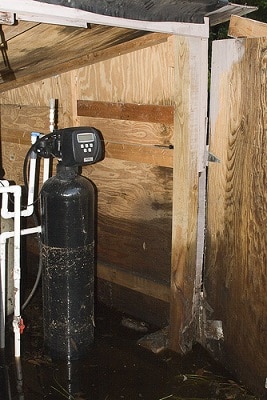There are countries that are frequently hit by water storms, which wreak havoc and leave people in devastating situations. Floods resulting from heavy storms affect infrastructure in particular. To bring back things to normal, storm-water pumping is crucial as it helps get rid of water in residential, commercial and other areas. The storm-water pump has a number of components. The pit is one of its components that allows intake of storm-water by sucking it from the bottom. The design of the storm-water pumping system is such that water has to rise up to the pit before the pumping recycle begins. When the water rises up the pump pit, it will fall to a certain level and trigger pumping activity.
In storm-water pumping, the volume of water discharged during pumping activity is an important factor to keep in mind. The volume of water-intake and discharge should not exceed a certain level because it will definitely result in soil erosion. Therefore, instead of solving an old problem, the storm-water pump will be creating a new one. De-watering process relies on particular type of storm-water pump that is elaborated as follows.
Submersible storm-water pumps

The designing feature for a submersible pump allows it to operate effectively in water conditions. In other words, it is waterproof and functions best when immersed in the water. This makes it an ideal solution for pumping out water as all its crucial components stay safe from water and do not get damaged easily. For instance, the motor is an essential component of the storm-water pump that facilitates sucking and pumping of water and since it does not get affected by water when the pump is immersed in water, it functions effectively.
Storm-water pumping in Phoenix is a manageable task because the storm-water pumps used are submersible pumps. The other good thing about submersible pumps is their ability of self-activation. Once you put it into the water, it immediately starts pumping out water. The only condition for the submersible storm-water pump to operate without any defect is for the top part of the pump to be below the water. If the top of the pump is above the water, air easily moves in barricading the pumping process and disrupting liquid discharge.
Role of storm-water pump
With an effective pump system in place, it is possible to limit the damages that result from coastal and inland flooding. People, livestock and crops are usually at stake when there is a heavy flood. In addition, flooding poses threats to the infrastructure and may lead to famine. Generally, storm-water pumps get rid of water overflows in a certain area. They pump water through other safety channels preventing damages to crops, infrastructure and livestock.
Maintenance of storm-water pumps
It is easy to perform maintenance services to a storm-water pump by coming up with a good checklist that will determine the maintenance frequency. The first thing to do is observing the pump to see if there could be any sort of damage or leakage. If there is any leakage, you need to arrange for repair services. Secondly, you need to listen carefully as the machine operates to see if there is any out of the ordinary sound. To perform a mechanical inspection on the storm-water pump, you need to confirm if the mounting points are secure, look into the pump flanges for leaks, inspect coupling and the mechanical seal and packing. If all these elements have no issue, then the storm-water pump is in a good condition and may only require little improvement or adjustment.
Lubricating the motor of the storm-water pump is also another way of maintenance. You need to lubricate the pump according the manufacturers guidelines otherwise, you will only make the pump more vulnerable to mechanical damages. The pump will operate efficiently if you grease at the right level. Bearing damages in storm-water motors occur when you over-grease.
You can also come across bearings that have a vent cap and as such, you should the remove the cap and run the pump for half an hour prior to reinstalling it again. Removal of the cap will allow the excessive grease to come out from the bearing. The other essential part of the pump that you need to observe is the motor. Inspecting involves ensuring that all the terminations are tight enough and that all the motor vents and windings are free from dust or dirt build-up.
Storm-waters are important because of so many reasons that cut across human beings, livestock and the environment at large. They need to be regularly maintained for effective performance especially in a weather pattern that causes flooding. If the storm-water pump has any kind of mechanical problem, take it to the nearest contractor for repair services. Always take the pump to an expert at the earliest stage of a mechanical problem before it spreads and becomes a major issue.
